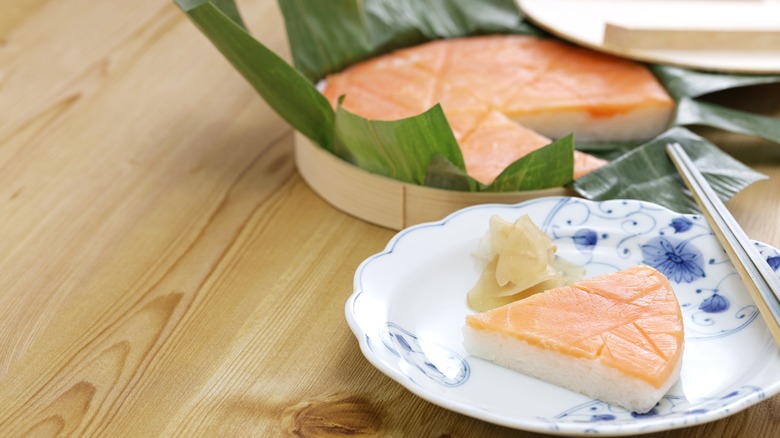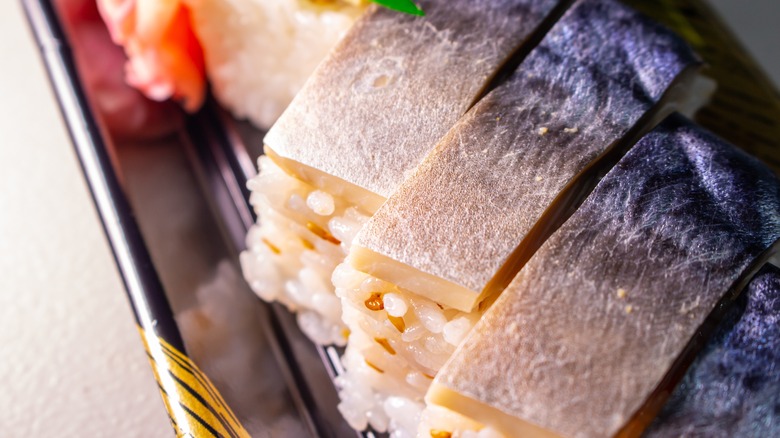What Makes Oshizushi, Or Pressed Sushi, Unique
Sushi is one of the simplest and most expressive dishes on the planet, comprised of rice, fish, and sometimes seaweed or nori. But "sushi" is also used to refer to a number of very different styles, from deep-fried imitation crab California rolls to a plain strip of salmon atop a squat mound of rice. One of the more delightful iterations of sushi is oshizushi, also known as pressed sushi, which is just as beautiful as it is delicious.
Oshizushi is made by layering rice, fish, and other toppings into a wooden box known as an oshizushihako. After each layer, the top of the wooden box is pressed down so that, over time, it becomes a firm, stable cake that can be cut into clean and aesthetically-pleasing rectangular pieces. The oshizushihako boxes can often be adjusted according to the height of the oshizushi, and some have slits in the side so that the oshizushi can be cut into pieces before removing it (you would otherwise need to deconstruct the box and slice it after the fact). Other variations of oshizushi use cylindrical pressing boxes to form a circular pattern if viewed from above.
Oshizushi is largely popular because of how beautiful it looks. Different ingredients can be layered, sliced, and rearranged in order to create a colorful chessboard effect, with shimmering fish skin contrasted with bright green vegetables and soft pink and white strips of shrimp or salmon.
Forming oshizushi is an art
Sushi generally retains its shape well, thanks to the high stickiness of short-grain sushi rice, which has naturally high levels of starch and moisture, which are exacerbated by the rice vinegar used to flavor the rice. But one of the benefits of oshizushi is that it is even sturdier than normal sushi because the pressing molds it into shape, and you can even eat it with your hands without it falling apart. Tanken Japan recommends dampening your oshizushihako before use to prevent the rice from sticking to the top of the box, though you can also line it with parchment paper or brush it with tezu, a solution of rice vinegar and water.
The fish for oshizushi is generally cooked or lightly pickled to cure it. Types of oshizushi vary according to region — battera is one popular variation found in Osaka, which is made with mackerel and named after the Portuguese word for small boat, "bateira." Masu sushi, made in Toyama with pink salmon, is wrapped in bamboo leaves and formed into a round cake shape before being sliced into wedges. Some other versions incorporate bright yellow layers of scrambled eggs, like kakuzushi from Hiroshima or omura sushi from Nagasaki.

